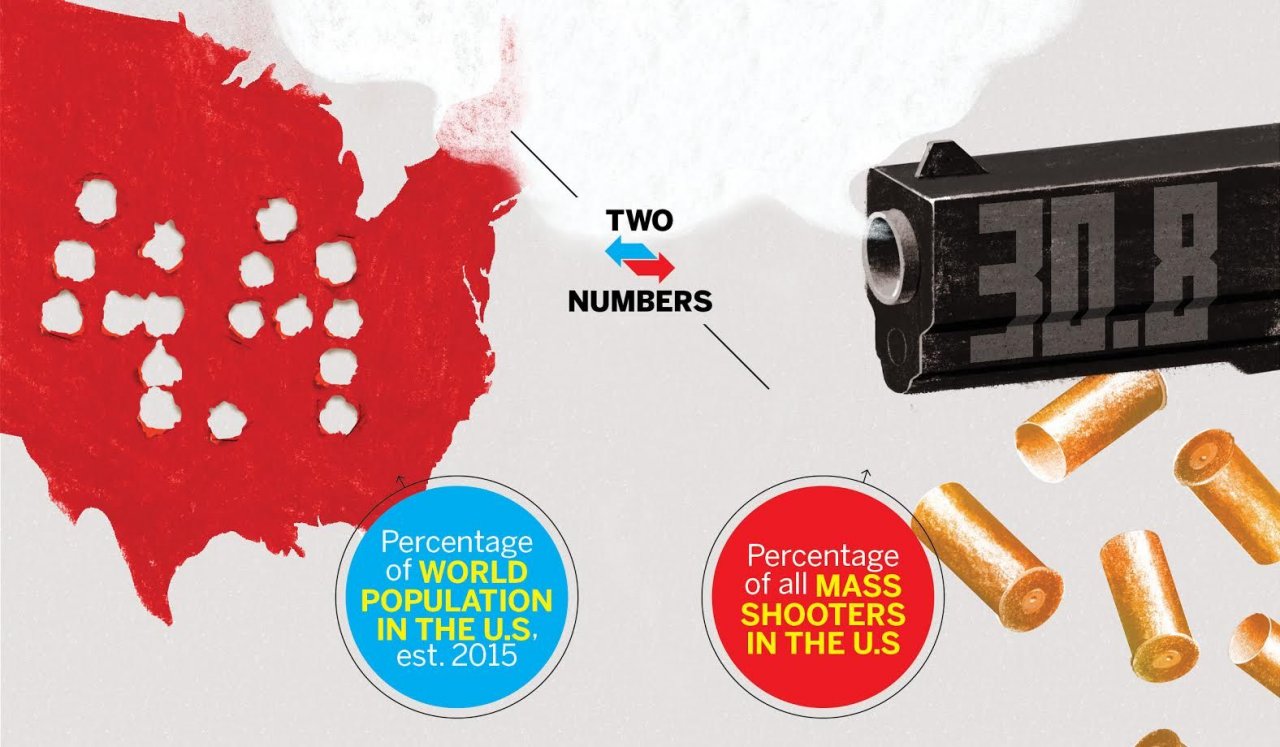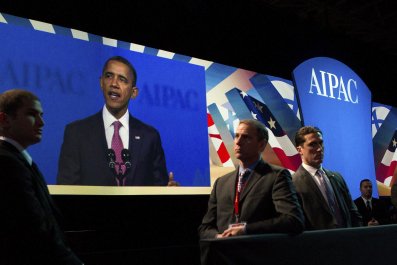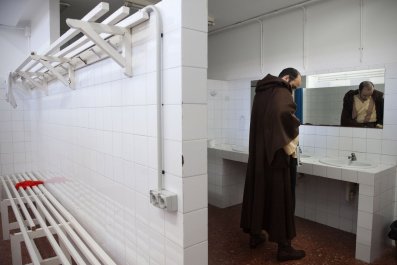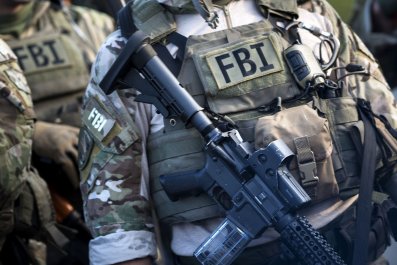The incidents seem to accumulate at a staggering pace: Mass shootings in schools, movie theaters and other public places have left scores of victims in their wake. And an overwhelming number of them have occurred in the United States.
Adam Lankford, a criminal justice professor at the University of Alabama, looks at the "dark side of American exceptionalism" in a new study to be presented Sunday at the Annual Meeting of the American Sociological Association in Chicago. In "Mass Shooters, Firearms, and Social Strains: A Global Analysis of an Exceptionally American Problem," Lankford uses a quantitative analysis of mass shootings around the world between 1966 and 2012 to attempt to understand their prevalence in the U.S., and he consults previous research to try to understand the factors behind this unmatched frequency.
"It's a bigger problem today than it was a decade ago and it may be a bigger problem in the future," Lankford tells Newsweek. "There are a lot of questions that people have posed in the past that we didn't have statistics on or quantitative answers for," such as just how prevalent mass shootings are in American society compared with other countries, and whether there's a statistically significant relationship between this and other numbers, like rates of firearm ownership, homicide and suicide.
Building on two "active shooter" reports released by the NYPD in 2010 and 2012, Lankford began by compiling data on mass shootings around the world between 1966 and 2012. He used the FBI's definition of mass murder—which indicates four or more people killed—as a threshold, with the assumption that more deadly events would have been more widely documented and therefore it would be easier to assemble a more complete list.
With data for 171 countries, Lankford found that the United States had by far the most public mass shooters, with 90 during the 46-year period. That's five times as many as the next country on the list—the Philippines, with 18. Rounding out the top five were Russia (15), Yemen (11) and France (10). In other words, although the U.S. accounts for less than five percent of the world's population, it had 31 percent of mass shootings between 1966 and 2012.
The strongest statistically significant factor Lankford found was the national firearm ownership rate. "What was surprising was how strong the relationship was—no matter what test I ran the data always showed the same thing," he says. Even when Lankford removed the American outlier, his statistical tests showed just as strong a relationship between firearm ownership rates and mass shootings.
The top five countries in terms of civilian firearm ownership rates—the U.S., Yemen, Switzerland, Finland and Serbia—each made the top 15 in the list of mass shootings. This finding "suggests that essentially you can't be in the top five in firearm ownership and not have this problem," Lankford says, even in countries like Switzerland and Finland, which are "relatively peaceful in terms of total number of homicides." Homicide and suicide rates did not appear to be significant in Lankford's study.
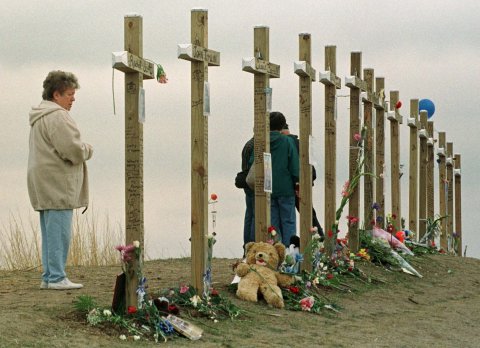
Lankford also found that offenders in the U.S. were more likely to use multiple weapons and to carry out their rampages in schools or workplaces than were shooters in other countries.
To try to further speculate on the prevalence of mass shootings in the U.S. and to look beyond firearm ownership rates, Lankford turned to his own and others' previous research to ask: Is there something about American culture that incubates more mass shooters?
"At least one explanation" about violence in the U.S. has suggested that "crime and deviance occur when there's an unhealthy gap between people's dreams and aspirations and their ability to reach those dreams," Lankford explains. In the U.S. in particular, he writes, success and fame are idolized. "Everybody is shaped by culture in a way," says Lankford. "Our culture has people reaching for the stars and slipping and falling probably more often."
Public mass shooters—who often make comments or leave behind notes that help explain their motives—frequently cite "blocked goal achievement (such as being expelled from school or fired from work)" or "negative social interactions (such as being bullied by fellow students, coworkers, or supervisors)," according to the paper. Mental illness can distort certain individuals' perceptions of such strains and exacerbate their inability to deal with them in a non-violent manner.
That school and work represent these grievances as well as the gap between one's aspirations and ability to fulfill those dreams could explain why American mass shooters are more likely than those in other countries to target schools and workplaces.
"Unfortunately, due to some combination of strains, mental illness, and American idolization of fame, some mass shooters succumb to terrible delusions of grandeur, and seek fame and glory through killing," Lankford writes in his paper. "They accurately recognize that the only way they can guarantee that their names and faces adorn magazines, newspapers, and television is by slaughtering unarmed men, women, or children."
Such was the case with the Columbine High School shooting in 1999, which has inspired copycat shootings in the U.S. and other countries. Lankford cites a 2009 paper by Ralph Larkin that identified school shooters in Argentina, Canada, Finland and Germany who "imitated or referenced the Columbine killers."
Mass shooters may be far more common in the U.S. than in any other country in recent decades, but "in a world that has been made functionally smaller by advances in technology and communications," Lankford writes, "America's exceptional problem of mass shooters could grow increasingly globalized."


